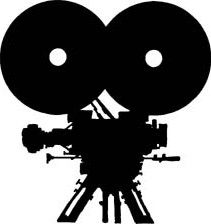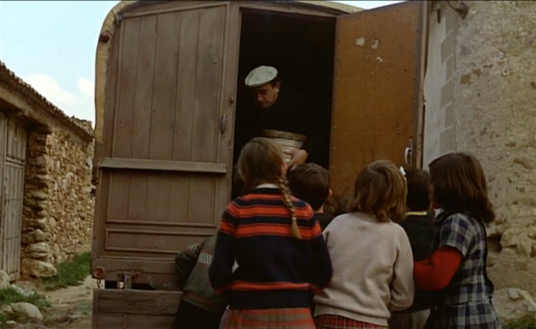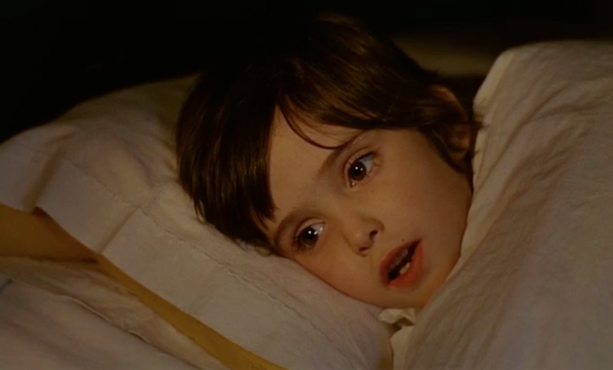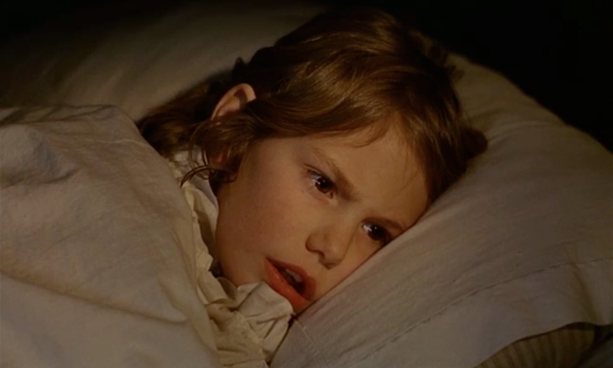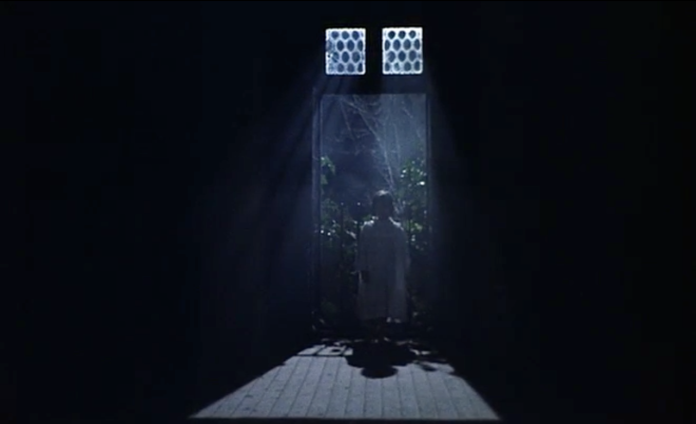El espíritu de la colmena
The Spirit of the Beehive
(1973)
Directed by: Víctor Erice
Writen by: Víctor Erice and Ángel Fernández Santos
Cinema lay claim to the child, as the child lay claim to the cinema. The inhabitants of a small Castilian village gather in the local hall to watch the traveling cinema’s screening of James Whale’s classic Frankenstein. They direct their attention to the blank, worn, screen hanging on the wall, carrying their chairs across the dusty floor, as the showman, with his reels of film and his projector, transform the shabby hall into a threshold. This is a poignant reconstruction of the exhibition and reception of film in a rural community in 1940’s Francoist Spain.
As Erice cuts repeatedly from one of the founding scenes of cinematic horror, the encounter between Frankenstein’s Monster and the little girl by the lake, to linger on the faces of its audiences, the sequence yields some of cinema’s most compelling images. Children watch at the screen, and in that look lies that of a child caught up in the wonders, and horrors, of the moving image.
Ana is a young girl, as played by Ana Torrent, and according to Erice, she was viewing the film when he was shooting her. He managed to capture the realism of her wonder. She was not acting, she was living Frankenstein. This is a monumental moment, not just for Erice, but for the film, as The Spirit of the Beehive uses Ana’s fascination with the Monster to explore both the legacy of the Spanish Civil War and the powerful but elusive connection between cinema and a young girl’s experience of her own mind.
There is a history of censorship embedded in the screening. As the film starts, there is a brief spliced-in introduction. A man steps out behind a curtain and presents the film, stating it has been known to horrify audiences around the world, but he recommends we do not take it so seriously.The film has obviously been compromised, fitted, cut down, corrupted according to the prevailing Francoism of the time. Franco attempted to use cinema to change his negative image abroad and to create the impression that freedom of expression was still permitted. Yet this formal introduction, rebound and presented in the opening sequence of The Spirit of the Beehive, bears a new meaning. We witness the scene from Whale’s film in which Frankenstein’s Monster encounters a little girl throwing flowers into the water along the shore of a lake, yet the part when the Monster throws the little girl into the lake has been cut. The possibility that the Monster believes that, like the flowers they have been tossing in, the little girl will float in the water has been obscured in favour of an image of his unpredictable and apparently unmotivated murderousness, as the film cuts from the Monster and the girl by the lake to the shot of the father carrying his dead daughter through the streets of the village. But we cannot take it too seriously.
Ana’s questions come in the wake of the death of a child on screen, the act which was omitted from Whale’s film, when the Monster tragically confuses the beauty of a flower with the beauty of the girl, and he attempts to play, to be like a child, yet a child is what the Monster has never been.
Ana is unsatisfied with her older sister’s answer. Her question will lead her through the film and become a symbol of how a child’s passion for film catche on as she tries to make sense of the world, of its terrible violence, of its unexplained phenomena.
When Ana comes across a member of the maquis, or anti-Francoist resistance, hiding in the outbuilding where, according to Isabel, the spirit of Frankestein’s Monster dwells, Ana befriends him, taking care of him in a complex mime of Whale’s presentation of a young girl’s fateful gestures of friendship towards a Monster. Following the murder of the soldier, Ana runs away across empty fields, which, as her parents and sister begin to search for her, become the dreaded landscape of a missing child. Night falls, and the search continues through torch-lit woods.
Ana walks alone through another part of the forest. An image of vulnerable purposefulness. Ana is looking for something, or someone, in stark contrast with her Mother, whom while reading a letter from a lost lover, decides to stop searching. Ana crouches by the edge of a pond in which she sees, first, her own reflection, and then that of Frankenstein’s Monster.
As day dawns, Ana is found apparently asleep, in the shelter of a ruined wall. But what has happened? Has Ana dreamed her encounter with the Monster– a dream that, if it follows the outline of Whale’s story, ends with her own death? Or has she refashioned an actual encounter with a stranger in the woods to suit the story that so preoccupies her? Back home, mute, sleepless, refusing to eat, Ana is examined by a doctor who attempts to reassure her mother with words that, while evoking the conventional dangers of the forest for a young girl, stall any knowledge of what, if anything has occurred.
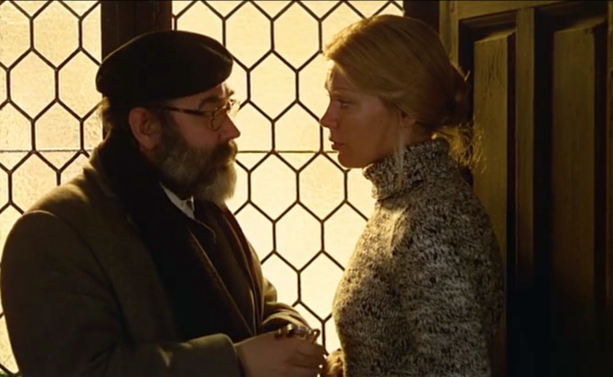
“She’s under the effects of a powerful experience. Slowly, she will come to forget it. Teresa, the important thing is that your daughter’s alive. She’s alive.”
What The Spirit of the Beehive struggles with is how to represent to the adult spectator how a young child experiences cinema. The film has touched Ana’s mind; its preoccupation of her imaginary life has driven her towards possible hallucination, or more precisely, towards refracting the traumas, the enigmas of the world, through a protective image borrowed from the screen. That this projection is not without risk is part of the film’s exploration that whatever is taking place between Ana and the Monster is something haunted, sending her into states of mesmerism and fugue as she revisits her experience of Frankenstein, of film, of life.
At the film’s closing, Ana stands at her open window and stares out into the night. She closes her eyes, looking enraptured, thinking of the Monster, of the spirit, as a train whistles in arrival. Then she turns around to face her empty bedroom, her home, the beehive. She is standing in the threshold between the Spirit and the Beehive.
